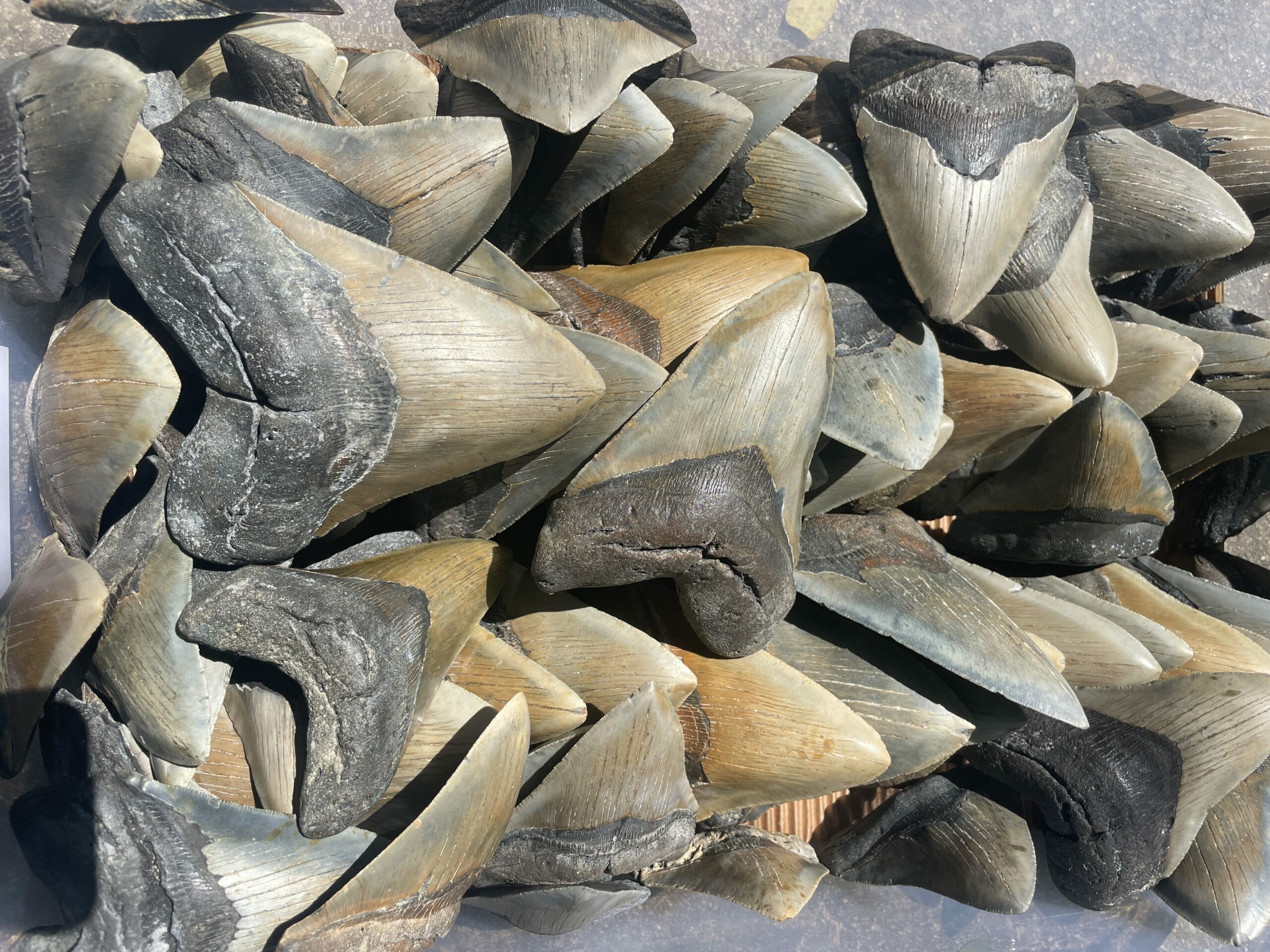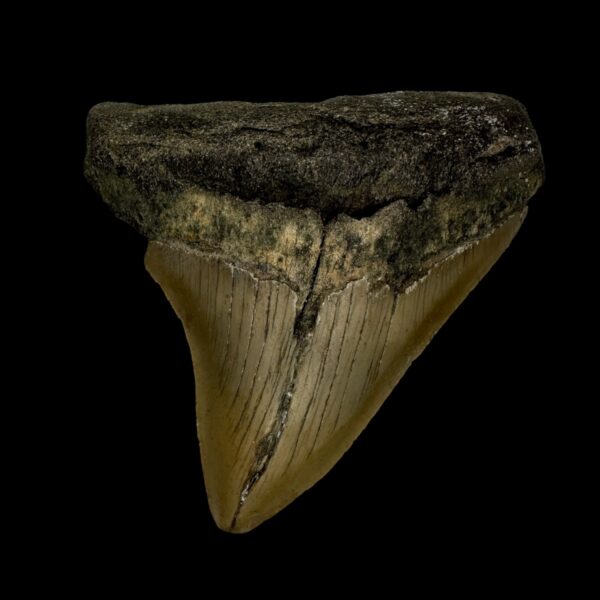If you’ve ever had the pleasure of strolling along the picturesque shores of North Carolina, you might have stumbled upon a hidden treasure: the fossilized megalodon teeth. These prehistoric relics of the largest shark to ever roam the seas are both fascinating and surprisingly abundant in the waters off North Carolina’s coast. In this blog post, we’ll dive into the intriguing reasons behind the profusion of megalodon teeth in this region.
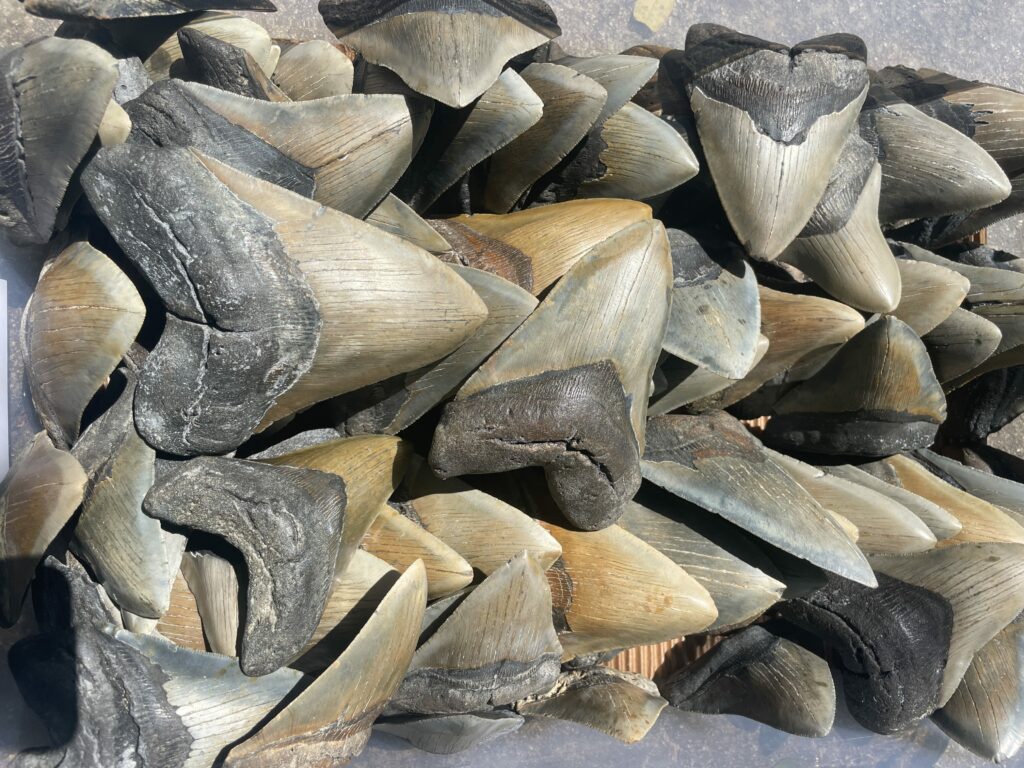
1. A Window into Ancient Oceans
The story of why North Carolina boasts an abundance of prehistoric shark teeth begins millions of years ago during the Miocene and Pliocene epochs. At that time, this area was submerged beneath a warm, shallow sea, creating an ideal environment for these colossal predators. These sharks, some of which grew up to 82 feet in length, found plenty of prey in the form of whales, seals, and other marine life, thanks to the region’s bountiful biodiversity.
2.Fossilization Magic
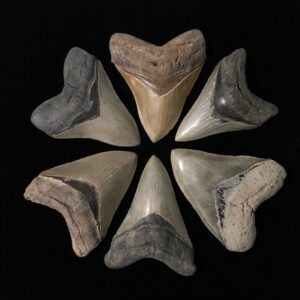
Aquí tienes el párrafo modificado para incluir la palabra clave “Ancient Sharks” de manera lógica:
One of the key factors contributing to the abundance of fossilized shark teeth is the remarkable process of fossilization. When one of these ancient sharks lost a tooth, it didn’t disappear. Instead, it sank to the sea floor, where layers of sediment gradually covered it. Over time, these layers compressed the tooth, helping it transform into a fossil. The unique combination of factors like sediment composition, lack of oxygen, and the relatively stable environment played a crucial role in this preservation process.
3. Shifting Coastlines and Erosion in North Carolina: Uncovering Megalodon Teeth
The geography of North Carolina has changed significantly over the millennia, with sea levels rising and falling, and coastlines shifting. Coastal erosion and the relentless forces of nature have been instrumental in uncovering these ancient treasures. As the coastline has evolved, it has exposed layers of sediment that have harbored these teeth for countless years. Storms and natural events can further expedite this process, making it easier for fossil enthusiasts to discover these remarkable fossils.
4. The Role of Currents and Tides in Revealing Megalodon Teeth in North Carolina
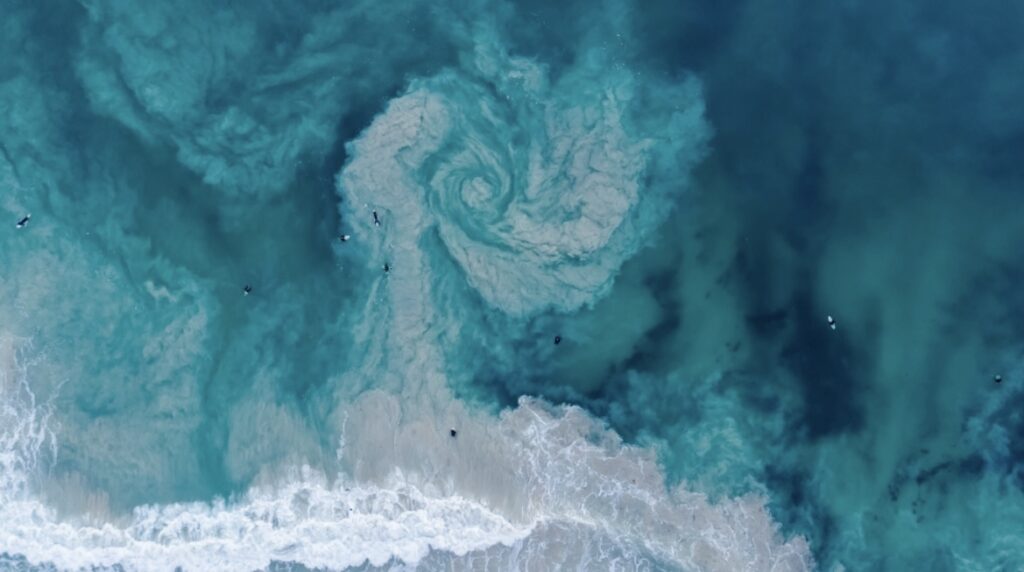
Coastal currents and tides also play a pivotal role in the discovery of Megalodon teeth. These natural forces can wash away layers of sand and sediment, revealing hidden fossils on the shoreline and in the deep waters offshore. Fossil hunters often keep a keen eye on the changing conditions, knowing that after a powerful storm or a particularly high tide, there may be new treasures to find. This is called “turnover”. Wave action and swells can shift the fossil layer deep below the surface and uncover megalodon teeth and other shark teeth that were previously burried.
5. A Tradition of Fossil Hunting
North Carolina has a rich tradition of fossil hunting. The allure of ancient shark teeth, coupled with the accessibility of the coastline, has attracted collectors and enthusiasts for generations. Whether you’re a seasoned paleontologist or simply a beachcomber with an appreciation for natural history, the thrill of finding one of these teeth hidden in the sand is an experience like no other. At The Fossil Exchange, we take this tradition to the next level by exploring areas of the ocean that are not accessible to most people. Diving to depths of 115 ft, we search the most productive fossil layers that North Carolina has to offer. You can browse our incredible collection here: https://thefossilexchange.com/

In conclusion, the abundant megalodon teeth off the coast of North Carolina are a testament to the region’s geological history, the unique conditions that favored fossilization, the dynamic nature of coastlines, the power of natural forces, and the enduring passion of fossil hunters. Each tooth tells a story that spans millions of years, offering a glimpse into the ancient oceans and the awe-inspiring creatures that once ruled them. So, the next time you visit North Carolina’s beautiful beaches, keep your eyes peeled – you might just stumble upon a piece of the past, waiting to share its secrets. https://naturalhistory.si.edu/

